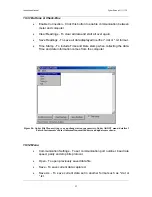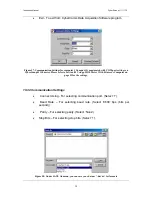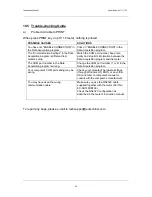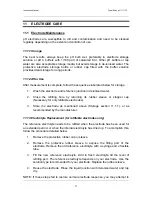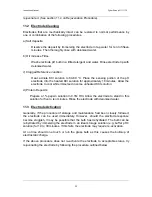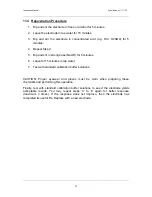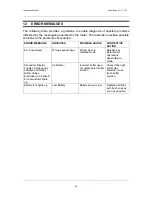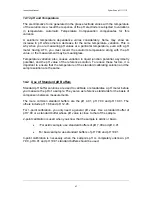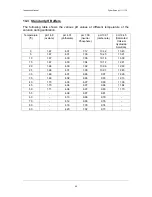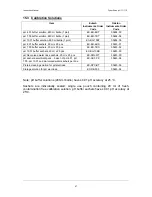
Instruction Manual
CyberScan pH 11 / 110
62
14
INFORMATION ON pH MEASUREMENT & ELECTRODE
The previous sections of this manual describe the various features of the instrument
and practical aspects of its operation. This section provides a general description of
pH measurement principles. It also provides tabulations of pH buffer changes with
temperature. Lastly, it includes a list of available accessories.
14.1 pH
Measurements
14.1.1 Liquid Junction Potential
The liquid - junction potential is the difference in potential created at the liquid - liquid
pHase boundary at the electrode tip, due to dissimilar composition of the test solution
and the saturated KCl electrolyte. The sign and size of the liquid - junction potential
depends upon the composition of the two solutions, the temperature, and the
geometry of the type of junction used.
When two solutions of different compositions come into contact, ion diffusion occurs
at the point of contact.
When there is a high liquid junction potential, measured values differ greatly from the
true value.
14.1.2 Asymmetry Potential
Within the glass electrode is an internal electrode that contains a reference solution
of pH 7. When the electrode is placed in a pH 7 solution, the pH values within and
outside the electrode are the same, and no potential ought to be produced. In
practice, however, an electric potential called asymmetry potential, is generated.
It has been shown that asymmetry potential varies with the pH of the solution in
contact with the glass, with age, with temperature, with the shape of the membrane,
with the thickness of the membrane, with impurities in the reference solution, and any
imperfections in the glass.
In addition, when the glass membrane dries out, the asymmetry potential increases
and leads to measurement errors. That is why it is important to keep the glass
hydrated prior to use, by soaking the electrode in a buffered solution or tap water.
(Do not use deionised water). The purpose of soaking the glass electrode is to obtain
a swollen low resistance glass surface and to stabilise the asymmetry potential of the
electrode. This swollen surface is generally spoiled by drying, prolonged immersion
in dehydrating solutions or chemical attack, such as etching by alkalis or hydrofluoric
acid. Hence, it is necessary to work with a well-soaked glass electrode to ensure a
constant asymmetry potential.






